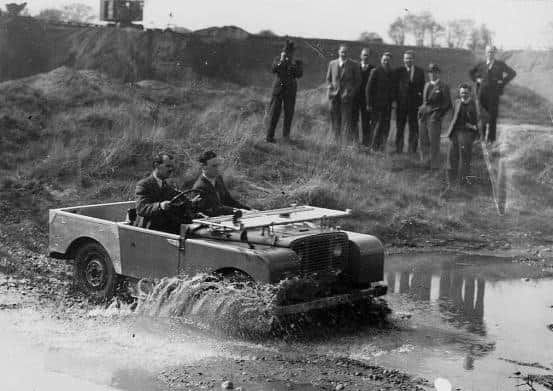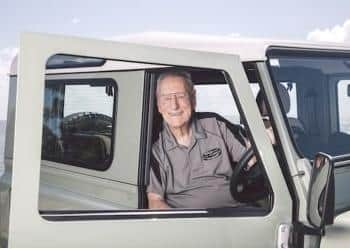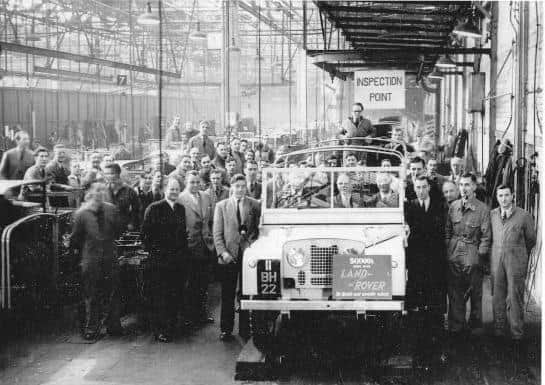Lead engineer on the first Landrover, 100 year-old Arthur Goddard, recalls those heady historic days
The humble author of a major chapter of automotive history is a tallish bloke with a deep-chested laugh – and still astute at 100.
Arthur Goddard was the Chief Engineer behind the first Land Rover: the man who turned the vision of Rover’s Technical Director Maurice Wilks into a road-going, country-bashing four-wheel-drive in ten months.
Advertisement
Advertisement
Speaking to the team from ‘Engage 4X4’, a beautifully produced monthly Australian automotive magazine being launched in Britain this week, Arthur remembers those momentous days in 1947 and 48 as though it was yesterday,


Arthur credits the speed of the project – Maurice Wilks’ concept was a vehicle to chase defence contracts, and replace his farm’s Jeep – to Solihull factory teamwork, prompt decision-making, and an array of Rover car bits to pilfer.
Modestly Arthur says: “I could pick people to do the jobs. I didn’t have to be all that good myself because I had a suspension man I could pull over (from the Rover car line), a steering man, and so forth.”
Arthur says: “We gave people what they wanted. It’s pleased a lot of people, and it kept on pleasing people. We met a need. I must say some of the needs we met we didn’t know were there. On the other hand, some of the stuff we thought would be an absolute winner was an absolute woof,” he chuckles. Maurice Wilks and his brother, Rover Managing Director, Spencer Wilks were looking for a go-anywhere, do-anything vehicle.
Advertisement
Advertisement
But the Land Rover chassis was all new. “The chassis made it possible. You haven’t got a complete body, but you want a frame on which to mount everything. That was the engineering problem ... what does that frame look like ... looks like nothing you’ve ever seen before.” Credit for that first chassis and aluminium bodywork went to engineers Gordon Bashford and Olaf Poppe for the rare-box section, and galvanised chassis with upright pieces below the A-pillars.


In 1948, Arthur headed off in a square-jawed Land Rover for its debut at the Amsterdam Motor Show. He was snowed under with orders, and worldwide demand continued through to January 2016, when production of the Series One’s successor – the Defender – closed down; more than two million of the iconic Series Land Rovers were sold.
Arthur said: “So, it had to meet all the army requirements, and it had to be a useful vehicle on the farm – where you could go off down the road to do a bit of shopping, or you could take a bale of hay across a snow-bound field, or whatever. And a much more useful combination than your tractor.”
Maurice wanted power take-offs, wanted a drive up the center because he saw the possibilities for industrial applications, arc welders, and more. Arthur wondered: “How many vehicles is this?”
Advertisement
Advertisement
As Rover’s Chief Development Engineer, he knew something about army vehicles. “But who the hell knew about tractors, who was working in the automobile industry in the UK?” Here, Arthur was grateful for help from the British Ministry of Agriculture. “Maurice knew, or appeared to know, what people would buy, I hadn’t got that. But I knew how to get it made.” He said it was “a bloody miracle” which Wilks, who wanted the job complete inside 12 months, got that first Land Rover in ten. He’s still proud of the teamwork, and admits the biggest mistake was not adding eight inches to the original wheelbase of 80 inches.


The ever-pragmatic Arthur Goddard moved on from Rover in 1955, and took up positions with other automotive concerns – including one in Australia, in 1972.
He liked the place, liked the lifestyle, and bought the small Brisbane engineering company Vehicle Components as a “hobby”, and a stake in the ground. Then, at 62, Arthur took early retirement from Lucas Girling to spend time with his own little outfit. Vehicle Components is now, with the aid of engineer son Chris and Arthur’s grandson Andrew, a leading designer and manufacturer of trailer suspensions and couplings.
Is there anything he misses about England? “The weather. I miss the weather,” and Arthur laughs a sneaky laugh.
‘Engage 4x4’ is published on 5th July 2021, and is available through the WHSmith travel network, McColls convenience stores and selected outlets, or directly from the www.engage4x4.co website.